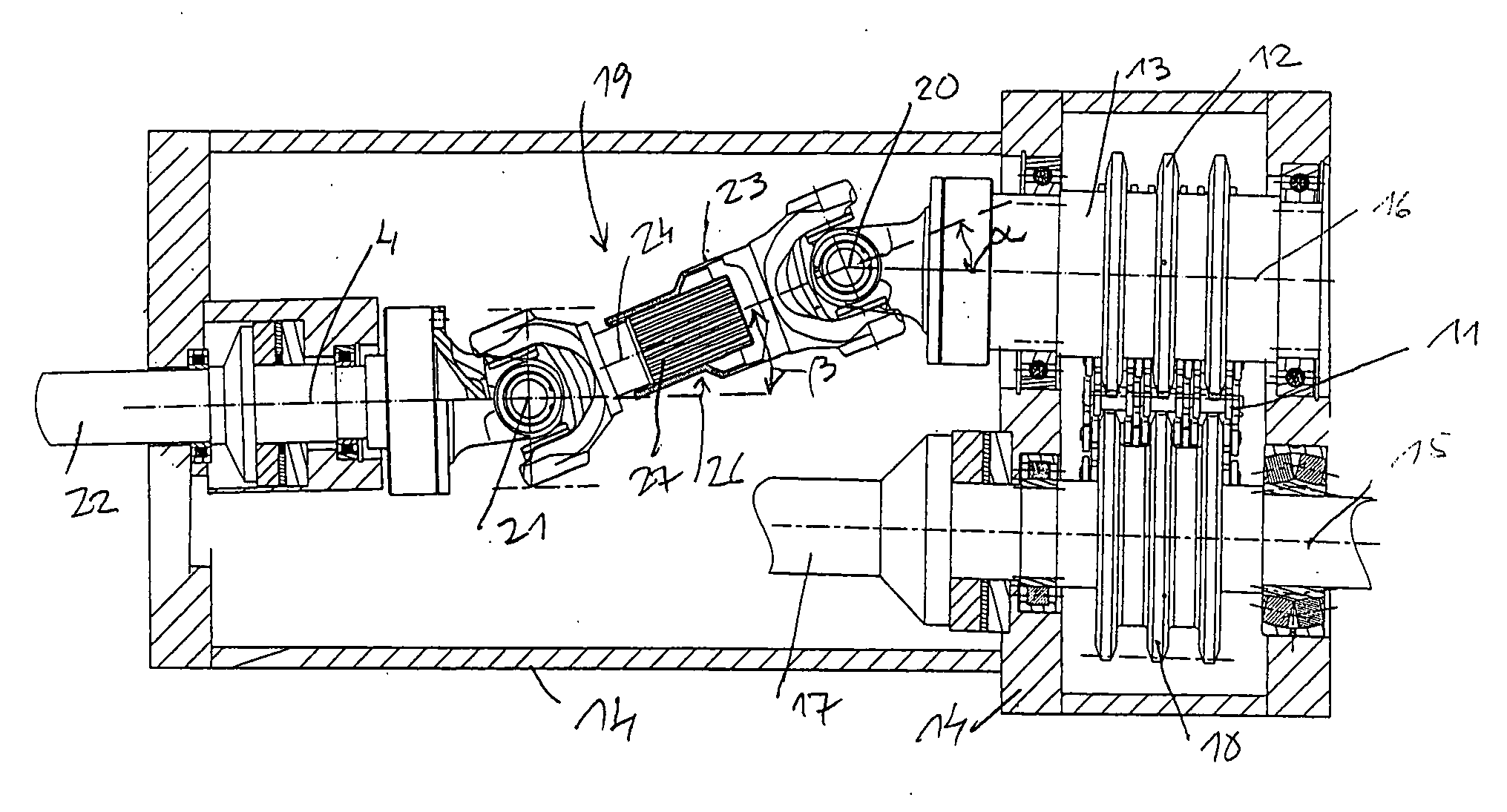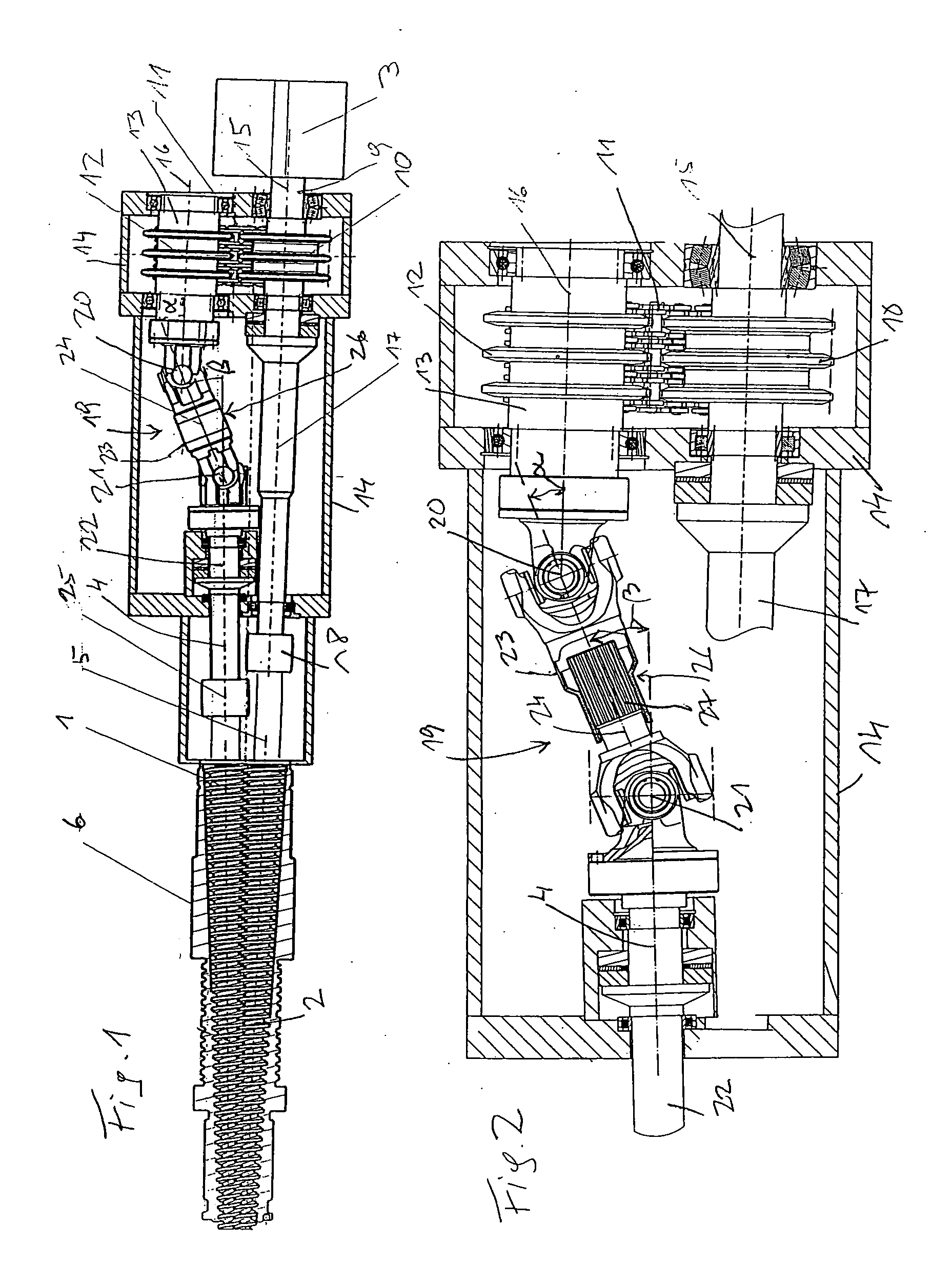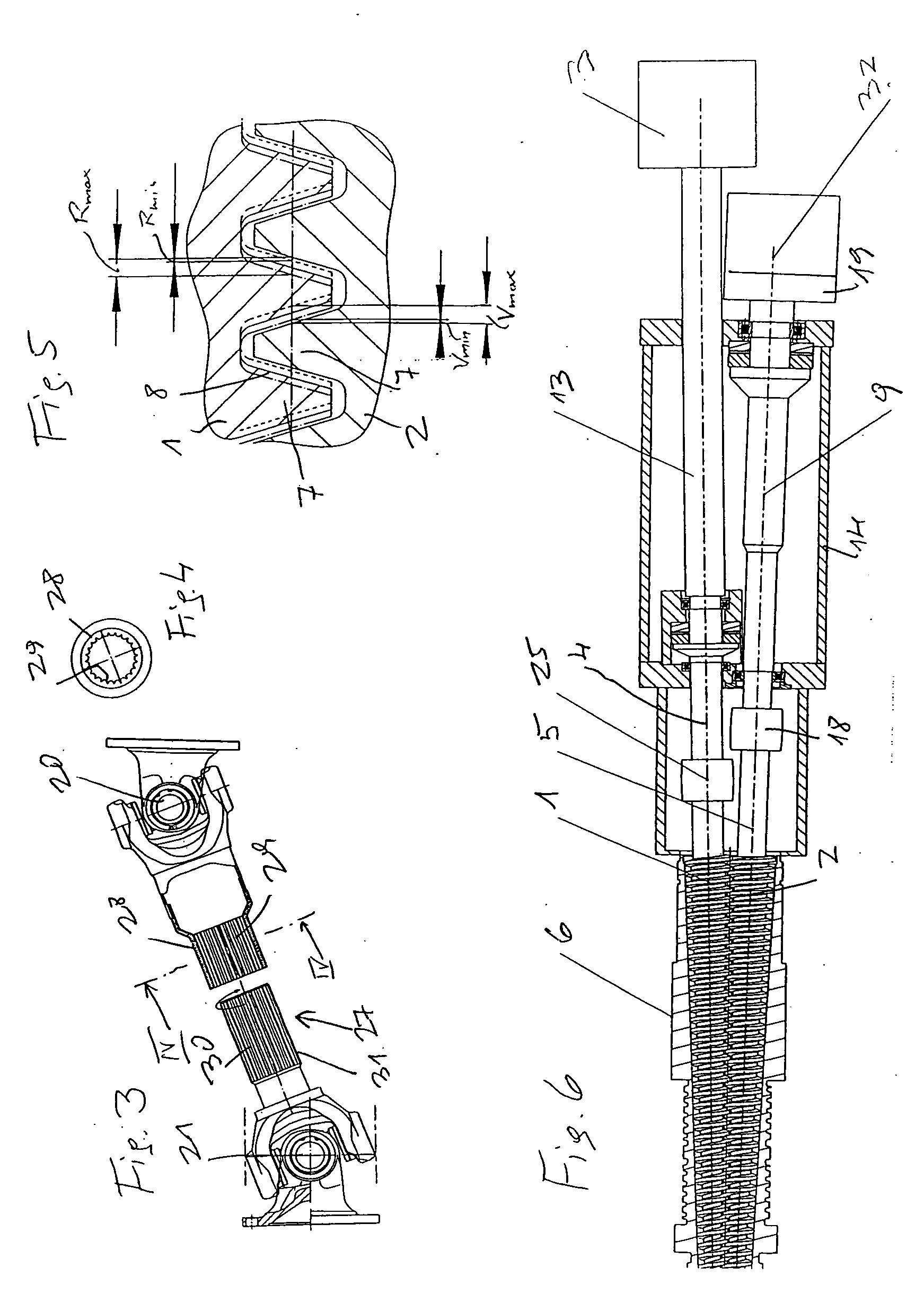Device for Processing Material by Mixing and/or Plasticization or Agglomeration
- Summary
- Abstract
- Description
- Claims
- Application Information
AI Technical Summary
Benefits of technology
Problems solved by technology
Method used
Image
Examples
Embodiment Construction
[0021]The exemplary embodiment according to FIGS. 1 through 5 shows a twin-screw extruder having two conical screws 1, 2, which are driven by a shared motor 3 to rotate in the same direction around their axes 4, 5. The conicity of the screws 1, 2 causes their axes 4, 5 to enclose an acute angle with one another. The two screws 1, 2 are mounted in a shared screw housing 6 and their screw channels 7 (FIG. 5) engage in one another, i.e., the screw channels mesh with one another, but are at an axial distance to one another, so that a gap 8 (FIG. 5) remains between the screw channels 7 of the two screws 1, 2.
[0022]The motor 3 drives the drive shaft 9, on which multiple chain wheels 10 are seated, which are connected via drive chains 11 to further chain wheels 12, which are seated on a further drive shaft 13. The two shafts 9, 13 are mounted so they are rotatable in a shared housing 14 and are driven to revolve in the same direction via the drive chains 11. Their axes are parallel to one ...
PUM
| Property | Measurement | Unit |
|---|---|---|
| Fraction | aaaaa | aaaaa |
| Fraction | aaaaa | aaaaa |
| Flow rate | aaaaa | aaaaa |
Abstract
Description
Claims
Application Information
 Login to View More
Login to View More - R&D
- Intellectual Property
- Life Sciences
- Materials
- Tech Scout
- Unparalleled Data Quality
- Higher Quality Content
- 60% Fewer Hallucinations
Browse by: Latest US Patents, China's latest patents, Technical Efficacy Thesaurus, Application Domain, Technology Topic, Popular Technical Reports.
© 2025 PatSnap. All rights reserved.Legal|Privacy policy|Modern Slavery Act Transparency Statement|Sitemap|About US| Contact US: help@patsnap.com



